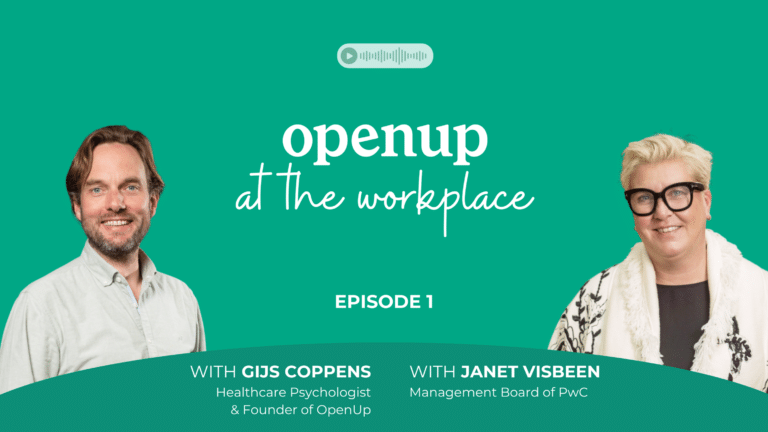An overwhelming majority of employees see a mixture of office hours and home working as the ideal state of affairs – nevertheless 74% also express concerns about these so-called hybrid working model. Why is that the case and what can companies do to appropriately meet these challenges?
Taking stock: the current state of hybrid working
The COVID-19 pandemic contributed to a rapid change within the world of work. Above all, flexibility now plays an increasingly important role. A survey found that 95% of the working population would like to have the freedom to organize their working hours and set individual performance targets. However, flexibility in terms of working location is particularly important here:
- For 88% of employees having the opportunity to work from home is still important following the pandemic;
- 71% think that remote working should be more widespread in general;
- Individual preferences vary widely: 10% would like to work exclusively from home, 22% would like more working-from-home days per week, 30% only want one working-from-home day per week, and 34% would only use their remote working days sporadically.
These finding make one thing clear: hybrid working models are the future. For many employees, this model is perfect because it offers maximum flexibility and autonomy, combining the benefits of being on site with those of working from home.
“The new normal isn’t about deciding between traditional office work and home working; it’s a combined approach,” explains the man behind the survey. His conclusion: “Hybrid working models are set to become more prevalent. Most will go into the office for a few days a week and work from home on the other days. Some will only work from home and others will only work from the office. And there will also be those who prefer ‘workcations’, working from vacation spots, whether in a hotel or motorhome – providing the job allows it of course.”
The challenges of hybrid working: Why are employees concerned?
Those who want to concentrate and not be disturbed when they’re working, can work from home, and those who have collaborative projects in their schedule, or simply want to exchange ideas with their colleagues, can come into the office. That all sounds nice and easy. But is it?
As already stated, hybrid models aren’t always met with enthusiasm. One study found that three quarters of all employees have concerns about hybrid working. In order to be able to tackle these challenges in a constructive way, we first need to look at where exactly these concerns stem from. The three most frequently mentioned issues are:
- Expectations regarding being present in the office are not clearly communicated (28%)
- Companies lack best practices for hybrid working (26%)
- Employees who prefer to work from home more often don’t get the same opportunities (25%)
One quick glance over these responses and it becomes clear, it’s not the hybrid working itself that worries employees. On the contrary, the thing causing concern is usually the leadership style, which hasn’t yet developed to incorporate hybrid working. More than anything, employees are afraid of making mistakes and ruining their career opportunities. This can lead to enormous stress.
What’s the best way to organize hybrid working? 5 quick tips
1. Control is (actually not really) good, but trust is better
There are a few things you need to keep in mind when navigating hybrid working. First off is trust – the most important prerequisite for hybrid working. Instead of demanding that your employees do their eight hours in the office every day, you should let the results speak for themselves.
2. Equal opportunities at home and in the office
As a result, this means that all employees should have the same opportunities. Whether someone prefers to work from home or in the office, it shouldn’t affect their chances of receiving a promotion or a pay rise. Here the only thing that counts is performance – and managers need to communicate this in a credible way.
3. Be transparent about expectations, without patronizing employees
It’s important to be particularly sensitive when communicating on this topic. On the one hand, expectations need to be clearly communicated, on the other hand employees want to work in a flexible, autonomous way. This means you want to avoid rigid top-down rules. Instead, some sensible basic principles for hybrid working need to be developed and made transparent as appropriate.
4. Flexibility is key: Core hours and flexible office days
Instead of having strict working hours of 9 till 5, we recommend the so-called core hours. This means that certain hours of the day – for example, the period between 11 and 3 – are a given, but outside of this, employees can decide for themselves when they want to work. As result, you’re establishing important preconditions for communication and collaboration within the team, while still giving employees plenty of flexibility.
The same applies for the place of work: instead of making it compulsory to go into the office on Tuesdays and Thursdays, for example, it’s better to let employees come into the office when they feel it makes most sense. In order to avoid the office getting too busy or being completely empty, allow employees to schedule their office days in advance. This can even serve as an additional incentive: If you know that your favorite colleague is going to be in to office, this will probably make you feel more exciting and motivated to work on site.
5. Involve employees in the discussion
It’s not always possible to act in the best interests of every single team member, however most employees value a democratic leadership style. If you enter into discussions with employees and ask about their needs, you can expect better results from hybrid working – even if you aren’t able to implement every single request, employees still appreciate a bottom-up approach. It leads to increased satisfaction and makes people more likely to accept new ideas.
How can you maintain your corporate culture while working hybrid?
The majority of employees no longer see the office as an obligatory work destination, but as an extension of their home office. 71% of employees like to do most of their work at home and tend to come into the office specifically for collaborative projects and social interaction.
This paradigm shift poses a range of challenges for companies. Many HR professionals are unsure whether they’ll be able to preserve their corporate culture without daily presence on site. Their doubt particularly relates to team spirit and the degree to which employees identify with the company.
1. Accepting the new normal
The world of work is constantly changing. This means you’ve ultimately just got to accept the hybrid working trend in the same way you would any other development. First things first, HR professionals need to let go of the idea that corporate culture is linked to physical presence in the office. Hybrid work is the “new normal” and that’s probably not about to change. Accepting this as the status quo and embracing the change is step one. By doing this you’ll find it easier to think of new and creative ways to reinforce your corporate culture in the following steps.
2. Create incentives to go into the office
“One thing that definitely won’t help to uphold your corporate culture is summoning everybody into the office by making attendance mandatory,” explains psychologist Eva Rüger. It’s much better to create incentives that make employees come into the office voluntarily. “If you do this right, employees will start to see working from the office as a resource and maybe, over time, as a benefit,” says Rüger.
But be careful: A long corridor with closed-off offices on each side has no place in a hybrid working environment. Instead, there’s clearly a trend towards corporate campuses where employees can work, learn and laugh together. Contemporary offices tend to consist of flexible workspaces, group rooms for collaborative projects, and quiet retreats for focused work. Multipurpose areas for breaks and hobbies, spaces for informal chats, modern cafes, and healthy, balanced food options with vegetarian and vegan options create additional incentives.
Multinational corporations in particular are leading by example: With gyms offering a variety of classes, to massages with qualified physiotherapists, and creative spaces where employees can take part in collaborative workshops on things like pottery, mixology or digital illustration – at companies with extensive headquarters, and budgets to match, anything is possible.
Obviously, small and medium-sized companies don’t have access to comparable resources, but that shouldn’t stop HR professionals from learning a trick or two. Even at new start-ups it’s possible to design offices that make employees want to be there. Whether it’s stylishly designed break rooms, nice specialty coffee in the kitchen or communal lunches paid for by the company on a certain day each week – there’s a lot of potential to get creative here.
3. Positive remote-working culture
In these digital times, there are plenty of tools that allow companies to preserve their corporate culture even when employees are working remotely. In terms of your daily work routine, this could be communication tools like Slack, for example. As well as meetings and exchanging information, channels should also be set up for informal interactions. In a relaxed atmosphere, employees should also be able to post non-work-related contributions for the purposes of social interaction. Informal routines can encourage employees to use these platforms. For example, some teams share their highlight from the previous week every Monday as a photo or post a GIF that reflects their current mood as a greeting each morning.
Coffee breaks with colleagues should also take place when people are working from home; only in a digital form. The same goes for team nights out: Whether it’s digital wine tasting, online games or virtual escape rooms. Meanwhile there are a ton of team building events for remote workers.
How can you recognize signs of mental health problems in employees?
The COVID-19 pandemic has had a huge impact on many people’s physical and mental health. According to a study entitled the State of Remote Work 2022, many employees (25%) who work from home struggle to switch off at the end of the working day. The second biggest mental health challenge is loneliness (21%).
The good news is that almost a third of those asked (31%) didn’t experience any negative side effects as result of working from home and consider remote working to be a completely positive experience. “Fortunately, the negative impacts on your mental health are much lower in hybrid working environments than they are in purely remote settings. This is because you can simply visit the office if you’re feeling an undesirable emotion, such as loneliness,” explains psychologist Judith Klenter. However, even in hybrid environments, HR professionals should pay particular attention to the mental health of their employees.
1. Open communication about mental health
One study by the National Alliance on Mental Illness found that 80% of employees refrain from seeking assistance for mental illnesses as a result of fear or stigma. This means that it’s the job of HR professionals to normalize the discourse around mental health. If you manage to create a safe environment with plenty of trust, employees are more likely to speak out about mental health issues.
2. Regular one-on-ones
“Employees who rarely come into the office are especially likely to suffer in silence,” warns psychologist Eva Rüger, explaining: “Often the HR department misses out on the opportunity to provide suitable intervention in such cases. Here it’s important to regularly look out for the well-being of your employees.” This means that mental health professionals should meet up with employees at regular intervals (perhaps twice a year) for personalized check-ins. “It’s essential that these counsellors are sworn to secrecy, as regards managers and colleagues, so that employees will see them as people they can really confide in about issues relating to their well-being,” says the expert.
By partnering with OpenUp, you offer your employees access to such experts. Employees can make use of our psychologists once or on a regular basis – depending on their needs. Without interference from their employer. For one-on-one meetings or guided group sessions. This is a great help for HR professionals, especially in hybrid work environments. And everyone benefits: healthy employees make for a thriving organisation.
3. Offering resources and communicating
Companies must ensure that all employees have access to sufficient resources relating to mental health. For example, mental health platforms can be helpful here, allowing companies to share information about wellness topics or specific exercises like guided meditations or mindfulness practices. As well as guided mindfulness meditations OpenUp offers mindfulness training sessions, all of which are led by licensed psychologists. These training sessions aren’t only available as individual consultations, but also as free group mindfulness sessions every Wednesday.
In line with the motto “a healthy mind lives in a healthy body”, employees are also encouraged to do more exercise. Many companies subsidize gym memberships, while others offer (online) yoga courses for the team. Also popular: Sports challenges in which employees support and encourage each other. Energetic people can train for a team run, and those who prefer a more relaxed approach, can compare the lengths of their walks with their colleagues using a step-counting app.
To make sure that stress and worries don’t get out of hand, and deteriorate into depression, burnout and other mental health problems, companies should provide employees with access to professional psychological support. It’s important to make sure that these services aren’t only available, but that employees are also made aware of them and encouraged to use them.
That is why we develop an activation plan together with you: we activate 100% of your employees to work on their mental well-being and as a result improve their work performance.
Psychologist Judith Klenter shares this tip: “It’s particularly helpful when HR professionals or managers set a good example by sharing their own experiences. It’s a way to normalize conversations around mental health.”
Want to know more about how we can help you – and hundreds of other companies in Europe – to improve the mental wellbeing of your employees? Click here or contact us.





